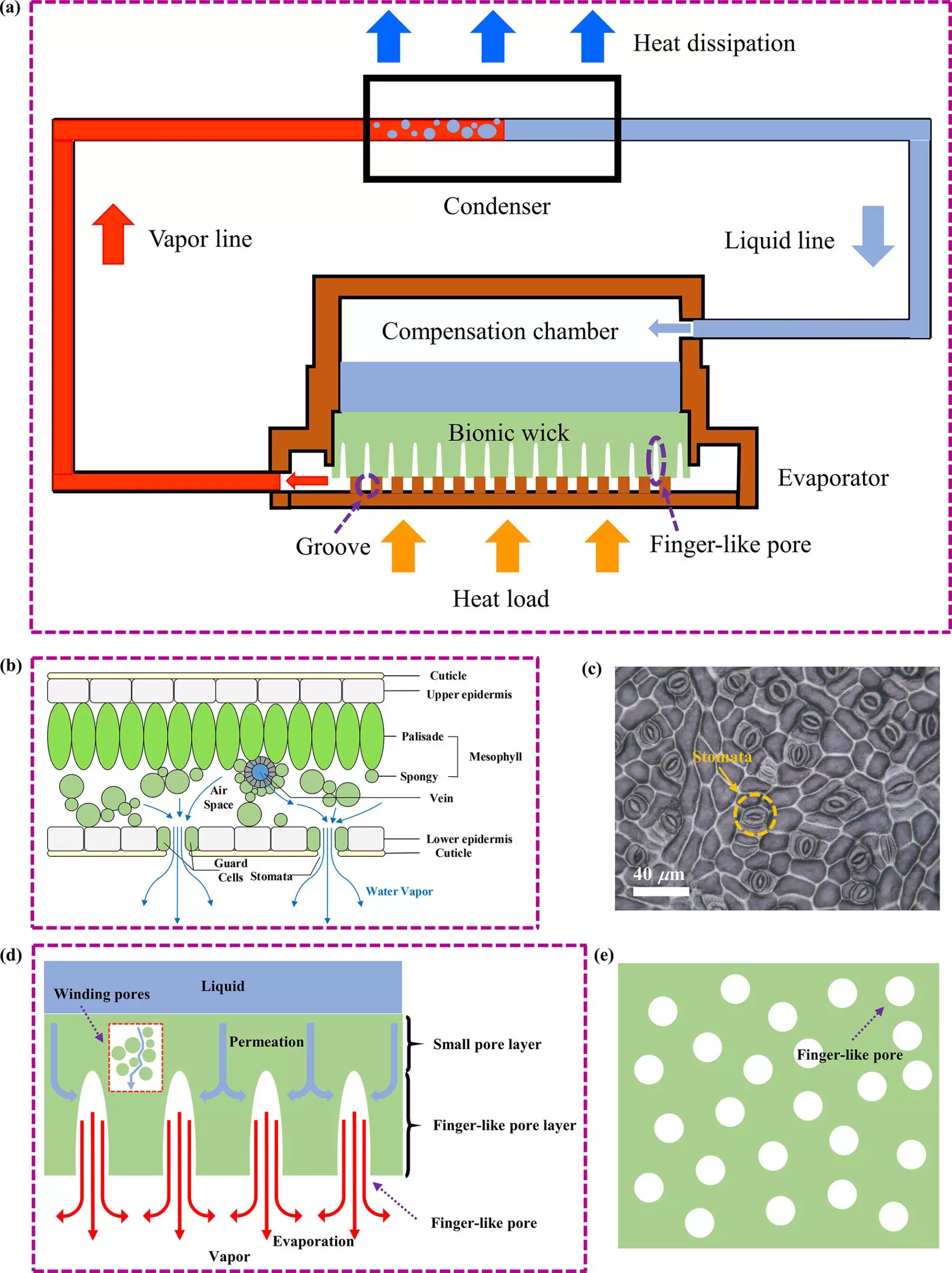In a groundbreaking study led by Prof. Ye Hong from the University of Science and Technology of China, a research team has developed an alumina ceramic bionic wick that draws inspiration from the stomatal array of natural leaves. This innovative approach to cooling strategies for electronic chips is a result of the increasing power consumption of electronic chips as their performance continues to improve.
The use of loop heat pipes (LHPs) as a cooling solution presents unique challenges due to the conflicting requirements for flow resistance and capillary force in designing the pore structure of the capillary wick. Larger pores are essential for reducing flow resistance for gaseous working fluids, while smaller pores are needed to provide sufficient capillary force for liquid suction. This dilemma has spurred the research team to seek inspiration from natural structures.
Using phase inversion tape casting, Prof. Ye Hong’s team successfully developed an alumina ceramic bionic wick with finger-like pores that mimic the stomatal structure of plant leaves. These finger-like pores create a larger gas-liquid interface area, facilitating the expulsion of gaseous working fluids and reducing mass transfer resistance. Additionally, micron-sized pores surrounding the finger-like pores provide the necessary capillary force to replenish liquid at the gas-liquid evaporation interface.
Start-up and operation tests of the LHP with the bionic wick confirmed its superior heat and mass transfer performance. This innovative design not only resolves the conflict between enhancing capillary force and reducing flow resistance but also offers a novel solution for high-power-density electronic chip cooling. The potential applications of this technology extend to efficient thermal management in aerospace, aviation, and microelectronics fields.
Overall, the development of the alumina ceramic bionic wick represents a significant advancement in cooling strategies for electronic chips. By emulating the natural structure of plant leaves, the research team has overcome design challenges and achieved superior heat and mass transfer performance. This innovative approach has the potential to revolutionize electronic chip cooling and has promising applications in various industries.


Leave a Reply